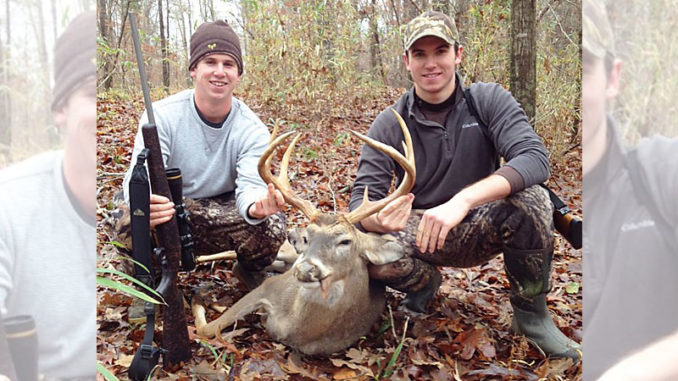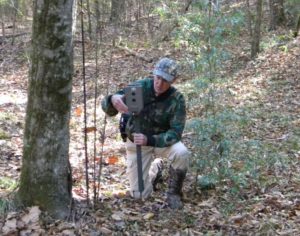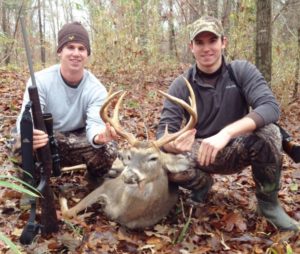
Proposed changes include banning importation of cervid carcasses from any state
It’s finally November, and we all know what that means: For my fellow members of the deer hunting community, the last nine months have slowly and steadily built up to right now. Untold amounts of toil, sweat and treasure have been expended to get to deer season.
It is a dizzying realization when you actually think about how many tractors, ATVs, pickups, trailers, farm implements, pounds of food plot seed and fertilizer, sacks of supplemental feed, sticks of treated lumber, sheets of decking and plywood, gallons of diesel and gasoline and man-hours of labor have been put into the preparation.
As we all know, whitetail deer season is a really big deal.
Regulation changes
To kick things off, let’s first go over some important proposed changes that the MDWFP announced in late September to deer hunting rules and regulations. The proposed changes should be enacted and become official by the time this installment of Happy Trails hits the newsstand.
But, don’t just assume anything. To be absolutely certain, check the final regulations before you head to the woods.

Regarding deer season:
Importation of cervid carcasses from ANY state, regardless of CWD status, is now prohibited.
It is now lawful to hunt less than 100 yards from feed or a feeder.
Beginning, July 1, 2019, it is unlawful to use natural scents or lures that contain natural cervid biofluids, or other biological material.
The first bullet point of course is relevant to any hunter who hunts successfully outside the state of Mississippi and wants to bring meat, antlers, the cape, etc., back home. A cervid is a hoofed mammal of the deer family cervidae, which includes whitetail deer, mule deer, elk, moose, caribou, axis and sika, among others. Check the regulations closely, as the new requirements are very stringent.
The second bullet point means that it will now be lawful starting with the 2018-19 deer season to hunt less than 100 yards from, and within sight of, feed or a feeder.
I was never really a fan of feeders and feed, but years ago when it became lawful to feed under strict guidelines, I jumped on the bandwagon and employed them mainly during deer season for use with game cameras. Even though the regulations required that a feeder had to be located at least 100 yards away from a hunter and screened from view, I always felt like many hunters hunted within sight of their feeders and used them as bait in spite of the regulations. So now we’re at least catching up with reality.
The third bullet point is quite interesting since it will outlaw the use of cover scents, scent bombs and lures that contain natural cervid fluids. But the good thing is that this new regulation will not go into effect until next summer, after July 1.
This will give all of us time to go through our hunting closets and locate anything that will become unlawful, and to use it all up this current season — which is what I plan to do.
The key phrase is natural cervid fluids, so I will have to look closely at my stock of doe-in-heat scent, rutting buck urine, deer scent gel, aerosol estrus doe scent bombs and anything else similar that I might have on hand.

Buck movement study
As we transition during November into the pre-rut period, get your trail cameras out if they are not already in place. If you have at least a few years in the whitetail woods under your belt, you have probably noticed that across the breadth of a deer season you will see home-body bucks that pretty much live on your property all year, bucks that suddenly appear and stay through the rut, bucks that you have been watching that suddenly disappear and lastly, bucks that appear maybe just once and stay for a day or two and then vanish. Help in understanding this phenomenon is on the way.
The Mississippi State University Deer Lab is already two years into a three-year study of year-round buck movement patterns that when should give great insight into their travels.
According to professor Steve Demarais, early returns are pointing to the fact that 60 percent of bucks tend to have a sedentary personality, with the remaining 40 percent being mobile and ranging around more.
The Big Black corridor in Madison and Yazoo counties is the setting for the study, which began in 2016 with the capture of 55 mature bucks that were fitted with GPS tracking collars and ear tags.
To enhance the results, a number of hunting clubs and landowners in and adjacent to the collared buck release area have agreed to collect detailed information regarding when and where they hunt throughout each hunting season of the study period, so that the effect of hunter pressure can be also analyzed. I absolutely cannot wait to see the results.